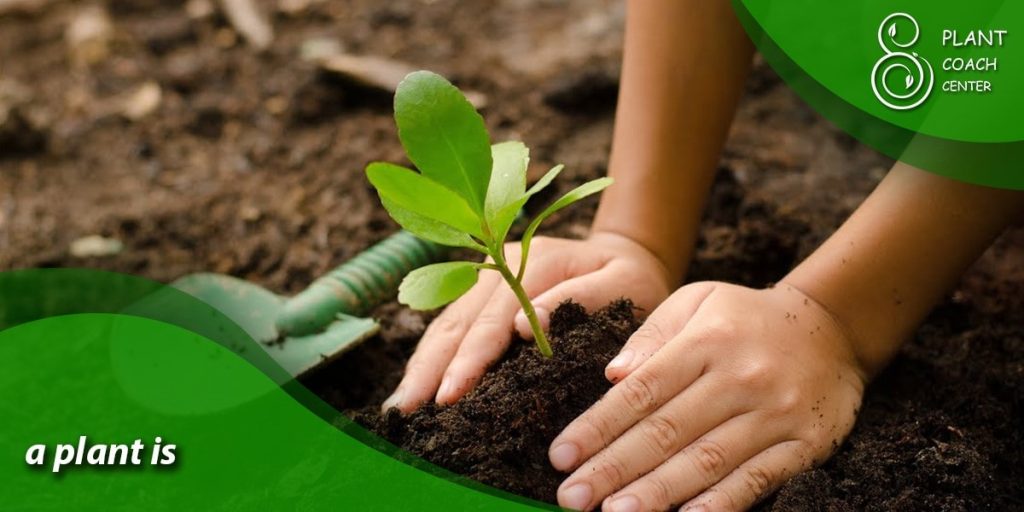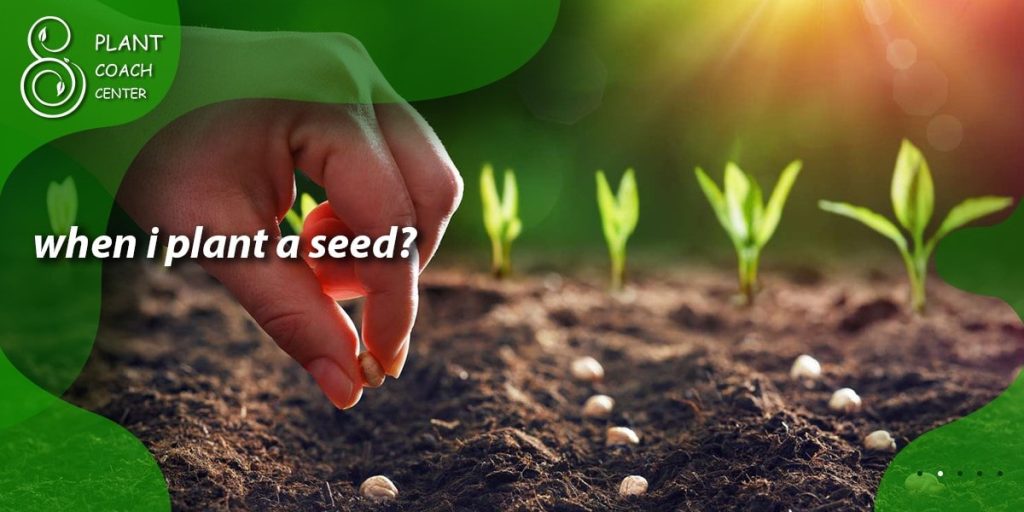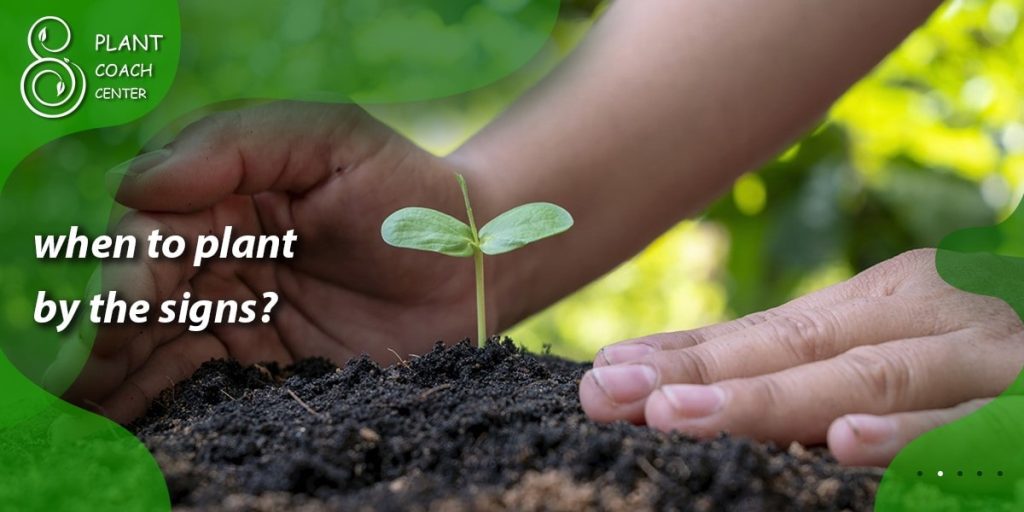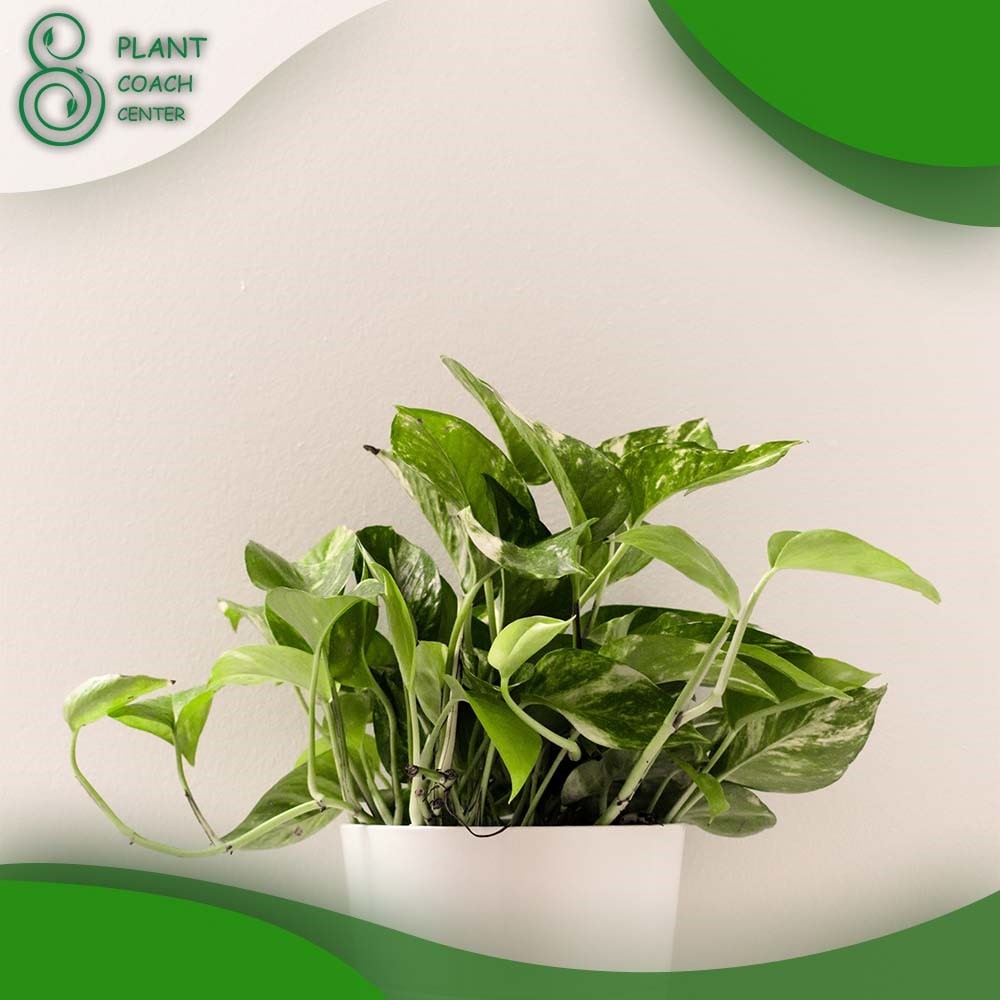When Should I Plant?
Welcome to the captivating world of planting, where nature’s heartbeat dictates the symphony of life that unfolds in our gardens. As the sun dances across the sky and the moon casts its enchanting glow, gardeners embark on a journey to unearth the ancient secrets of timing.
“When should I plant?”—a question that echoes through the hearts of both seasoned horticulturists and budding green enthusiasts alike. In this intricate dance between the elements and our aspirations lies the art of understanding when to sow the seeds of our dreams. Beyond mere dates on a calendar, this article will dive into the depths of this enigma, revealing how factors as diverse as astrology, lunar cycles, climate variations, and even the whispers of weather patterns come together to guide our planting decisions.
So, loosen the soil of curiosity as we explore the myriad ways to harmonize with nature’s rhythms and uncover the perfect moment to nurture life from the very start.

Navigating the Planting Seasons
In the grand theater of nature, each season takes center stage with its unique melodies and rhythms, setting the backdrop for the intricate choreography of growth and transformation. Just as a conductor leads an orchestra, understanding the nuances of each season empowers gardeners to play their part in this seasonal symphony.
Spring
The curtain rises with the advent of spring, a time of rejuvenation and new beginnings. As the frost thaws and the days lengthen, the soil warms and the air becomes alive with the promise of growth. Spring is the prime time for sowing the seeds of annual flowers and vegetables. The mild temperatures and ample sunlight provide the perfect conditions for these tender beginnings to flourish.
Summer
As the sun climbs higher in the sky, summer takes the spotlight, bringing with it the full bloom of life. It’s a season of vibrant colors, buzzing pollinators, and abundant harvests. However, for many regions, summer can also bring scorching heat, demanding careful consideration of watering and shade. This is the time for nurturing the fruits of earlier labors and tending to the needs of plants in the heat.
Autumn
The autumn breeze sweeps onto the stage, signaling a time of reflection and preparation. Deciduous trees display breathtaking colors as the days shorten and temperatures cool before shedding their leaves. Autumn is the season for planting perennial flowers, shrubs, and trees. The cooler soil temperatures and reduced evaporation allow roots to establish themselves before winter’s chill.
Winter
Winter’s entrance is quiet, yet it is significant in the symphony. While much of the garden seems to slumber under a blanket of snow, certain plants thrive in the coolness. This is the season for planting dormant trees and shrubs, taking advantage of their resting state to transplant them with minimal disruption.
Aligning Planting Times with Astrology
The cosmos has long captured human imagination, and its influence extends beyond horoscopes and starry nights. Enter the world of Zodiac Gardening, where the celestial dance of the stars and planets is believed to influence the growth and vitality of plants. Just as each astrological sign possesses unique traits, it’s thought that sure signs correspond with specific plant-related activities, enhancing your gardening endeavors.
Aries (March 21 – April 19)
The fiery and energetic Aries is associated with fast-growing plants and those with bold, vibrant colors. This is the time to sow seeds that require quick germination and initial growth bursts.
Taurus (April 20 – May 20)
Grounded Taurus encourages planting root vegetables and sturdy plants that thrive beneath the surface. It’s an excellent time for potatoes, carrots, and other root crops.
Gemini (May 21 – June 20)
Social and adaptable Gemini aligns with herbs and plants known for their versatility. Planting herbs like mint, basil, and chamomile can lead to robust growth during this time.
Cancer (June 21 – July 22)
Nurturing Cancer is linked to planting activities that involve caring for delicate seedlings and nurturing plants. It’s a time for tender loving care and focused attention on your green charges.
Leo (July 23 – August 22)
Bold and confident Leo is associated with showy flowers and ornamental plants. This is the time to let your garden shine with vibrant blooms that steal the spotlight.
Virgo (August 23 – September 22)
Detail-oriented Virgo is a prime time for planting vegetables and herbs that require precision and careful planning. Think orderly rows of lettuce, spinach, and well-spaced basil.
Libra (September 23 – October 22)
Balancing Libra harmonizes with planting flowers that encourage pollinators and bring a sense of aesthetics to your garden. Consider planting flowers that attract butterflies and bees.
Scorpio (October 23 – November 21)
Intense Scorpio aligns with crops that have deep roots and require commitment. It’s a good time for planting garlic, onions, and other crops with solid flavors.
Sagittarius (November 22 – December 21)
Adventurous Sagittarius encourages planting fruit trees and exploring exotic plant varieties. It’s a time to expand your garden’s horizons.
Capricorn (December 22 – January 19)
Practical Capricorn is a time for planting long-term investments, such as perennial flowers and trees. These plants mirror Capricorn’s patient and enduring qualities.
Aquarius (January 20 – February 18)
Innovative Aquarius aligns with unique and experimental planting. Try out new gardening techniques or unusual plant varieties during this time.
Pisces (February 19 – March 20)
Dreamy Pisces is associated with planting water-loving plants and those with a solid connection to intuition and emotion. Think water lilies and other aquatic plants.

Harnessing Lunar Cycles for Green Success
The moon has inspired poets, artists, and dreamers for ages with its ethereal glow and gravitational pull. Yet, its influence extends far beyond romantic notions, reaching into the gardening world through the practice of Moonlit Planting.
Believers in this ancient wisdom hold that the moon’s phases can impact the growth and vitality of plants, offering a guide for sowing, transplanting, and nurturing. Let’s illuminate the secrets of moonlit planting and how you can synchronize your garden activities with lunar cycles.
New Moon
As the moon wanes to its delicate crescent during the new moon phase, it’s a time for beginnings and fresh starts. During this phase, planting seeds that grow above the ground, like leafy greens and annual flowers, is thought to align with the moon’s growth energy.
First Quarter Moon
As the moon’s illumination increases, so does its pull on the Earth’s waters. This is an excellent time for planting crops that bear fruit above the ground, such as tomatoes, peppers, and beans. The increased gravitational force is believed to aid in more robust root development.
Full Moon
The full moon’s luminous presence is believed to enhance plant growth, making it an ideal time for transplanting and repotting. It’s also a time for harvesting herbs and fruits, as the moon’s energy is thought to enrich flavors and aromas.
Last Quarter Moon
During this phase, the moon’s gravitational pull decreases, which is believed to promote strong root development. Planting root crops and perennials during this time supports robust root systems that anchor plants for long-term growth.

Planting Strategies for Different Climates
Gardening is a dance with the elements, and nowhere is this more evident than in the diverse tapestry of climates that grace our planet. From the arid deserts to the temperate coasts and the frigid tundras, each region boasts unique challenges and cultivation opportunities. Navigating these climate chronicles requires a deep understanding of your local environment and a willingness to adapt your planting strategies to suit the conditions.
Desert Climates
In the scorching embrace of desert climates, water conservation is paramount. Choose drought-tolerant plants like succulents, cacti, and native desert species. Plant during the cooler months to minimize water stress during establishment.
Tropical Climates
The lushness of tropical climates offers a cornucopia of growth, but the risk of pests and diseases comes with high humidity and heavy rainfall. Opt for pest-resistant and disease-resistant varieties. Regularly prune to improve airflow and prevent moisture buildup.
Temperate Climates
The goldilocks of temperate climates regions enjoy moderate temperatures and distinct seasons. Embrace the rhythm of the seasons by planting cool-season crops in spring and fall and warm-season crops during the summer. This allows you to maximize your harvest throughout the year.
Mediterranean Climates
Characterized by mild, wet winters and hot, dry summers, Mediterranean climates call for water-wise gardening. Choose plants that can withstand extended dry periods and thrive in well-draining soil. Consider using mulch to conserve moisture.
Continental Climates
In regions with cold winters and warm summers, hardiness is critical. Plant perennials and trees that can withstand frost and winter chill. Use techniques like starting seeds indoors and utilizing cold frames to extend the growing season.
Polar Climates
The extreme cold and short-growing seasons of polar climates demand resourcefulness. Focus on cold-tolerant plants like hardy vegetables and alpine flowers. Consider using greenhouse structures or protective covers to create a more hospitable microclimate.
Decoding Nature’s Signals for Optimal Planting
In the delicate dance between the elements, the weather plays the conductor and communicator, guiding gardeners with subtle whispers and bold proclamations. Attention to these weather whispers can provide valuable insights influencing when and how you plant, ensuring a harmonious partnership with the natural world.
Temperature Trends
Temperature fluctuations serve as a roadmap for planting. As soil temperatures rise, seeds are more likely to germinate. Keep an eye on your area’s average last frost date to determine the best time to sow sensitive plants outdoors.
Rainfall Patterns
The rhythm of rain can dictate planting times. Sow seeds before a gentle rain to immediately hydrate newly planted seeds. However, avoid planting during heavy downpours, which can lead to soil compaction and seed displacement.
Wind Wisdom
The wind is a powerful communicator of weather changes. Planting on a calm day minimizes stress on young plants, preventing desiccation and physical damage. Wind direction can also impact your garden’s microclimate, affecting temperature and moisture levels.
Cloud Cover
Clouds act as nature’s sunscreen. Planting on overcast days reduces the stress of direct sunlight on young plants, helping them acclimate to their new environment. Cloudy conditions can also help retain moisture in the soil.
Frost Forecasts
Keeping an eye on frost advisories is crucial, especially in colder climates. Planting too early can expose tender seedlings to late frosts while waiting too long might limit the growing season. Consider using protective covers like cloths or row covers during frost-prone periods.
Barometric Changes
Barometric pressure shifts can indicate impending weather changes. Planting during a period of stable pressure often leads to more favorable conditions for root establishment and healthy growth.
Seasonal Signposts
Observing natural events like the blooming of certain flowers or the return of migratory birds can signal the right time to plant. These indicators are often closely tied to the local climate and can provide valuable guidance.

Taking Advantage of Microclimates
In the world of gardening, not all spots are created equal. Microclimates, those small-scale variations in temperature, humidity, and sunlight within a larger area, offer a canvas of opportunities for savvy gardeners to exploit. By understanding these unique pockets of climate, you can strategically plant your garden to optimize growth and yield.
Southern Exposure
South-facing areas receive the most sunlight throughout the day, making them ideal for sun-loving plants that require full sun. Consider planting heat-loving crops like tomatoes, peppers, and sunflowers in these spots to capitalize on the abundant sunlight.
Northern Exposure
North-facing areas are more relaxed and shadier, making them perfect for plants that prefer milder conditions. Shade-loving plants like ferns, hostas, and impatiens can thrive in these sheltered spots.
Elevation Effect
Higher elevations often experience cooler temperatures due to the decrease in air density. This can extend the growing season for cool-season crops, providing them with more comfortable temperatures during warmer months.
Nearby Structures
Buildings, fences, and walls can create microclimates by blocking wind and radiating heat. These sheltered areas offer a cozy haven for plants that might struggle in harsher conditions.
Water Bodies
Bodies of water, such as ponds or lakes, can moderate temperatures, creating a more stable climate around them. Planting near water sources can provide a buffer against temperature extremes.
Urban Heat Islands
Urban areas can be warmer than surrounding rural spaces due to the heat-absorbing properties of pavement and buildings. Utilize this warmth to your advantage by planting heat-loving crops in urban gardens.
Vegetation Buffers
Existing trees and shrubs can create microclimates by casting shade and reducing wind. Strategic planting near these natural buffers can help protect delicate plants from harsh conditions.

Using Apps and Tools to Determine Planting Dates
In this age of innovation, technology offers us a modern twist on gardening. With many apps and tools at our fingertips, determining the perfect planting dates has become a seamless endeavor. From weather forecasts to planting calendars, harnessing the power of tech can help you time your gardening activities with precision.
Weather Apps
Weather forecasting apps provide real-time updates on your area’s temperature, precipitation, and wind conditions. These tools can help you decide when to plant, considering weather patterns that might affect seed germination and plant growth.
Planting Calendars
Many gardening apps offer planting calendars tailored to your specific location. These calendars provide recommended planting dates based on your climate and the frost-free period, ensuring your plants have the best chance of thriving.
Garden Planning Software
Advanced garden planning software allows you to create virtual garden layouts, experiment with different plant placements, and even simulate how your garden will look at other times of the year. This can help you visualize your garden’s growth and adjust before breaking ground.
Soil Testing Kits
Soil testing kits can give you insights into your soil’s pH, nutrient levels, and composition. This information is invaluable in determining the proper amendments before planting, ensuring your plants have the best possible growing environment.
Light Meters
Light meters can help you measure the sunlight different garden areas receive. This data lets you identify the optimal spots for sun-loving or shade-loving plants.
Plant Identification Apps
For beginners and experts alike, plant identification apps can assist in identifying plant species and their specific care requirements. This ensures you’re providing the proper care for each plant in your garden.
Frost Alerts
Frost alerts can help you stay vigilant during frost-prone periods. These alerts notify you when temperatures are expected to drop to potentially damaging levels, allowing you to take precautions to protect your plants.
Conclusion
In the intricate realm of gardening, timing is more than a technical detail; it’s a dance of connection between EarthEarth, sky, and human intent. As we’ve explored the diverse strategies of Zodiac Gardening, Moonlit Planting, Climate Chronicles, Weather Whispers, Growing Up Fast, and Tech and Timing, it becomes clear that the art of when to plant is a symphony of science and intuition.
Embracing the wisdom of ancient traditions, the power of microclimates, and the convenience of modern technology, gardeners can craft a harmonious relationship with their green companions. Whether you’re poring over planting calendars on PlantCouchCenter.com or seeking solace in the moon’s rhythms, remember that every seed sown promises a flourishing connection to the natural world.
So, as you venture into your garden, let these insights guide you, and let your plants become your teachers in the gentle cadence of life’s most essential cycles.
What's Zodiac Gardening?
Aligning planting times with astrological signs for better garden results.
How do microclimates affect gardening?
Microclimates create diverse conditions, influencing plant growth and success.
How can technology aid planting?
Apps, tools, and weather forecasts optimize timing for successful gardening endeavors.







